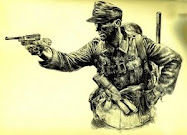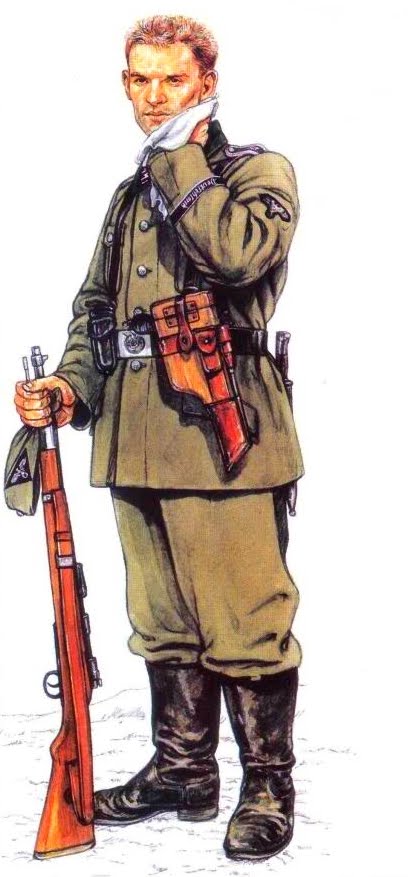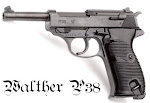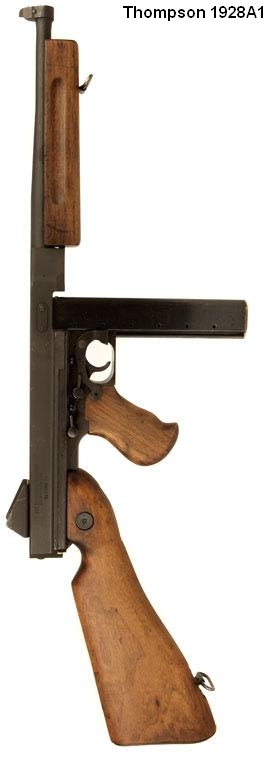Tuesday 29 March 2011
Wednesday 23 March 2011
Sunday 13 March 2011
Wednesday 9 March 2011
Camouflage & patterns

Since the beginning of time, man and all other types of life have used camouflage. It can be used offensively or defensively. Camouflage can be used either to hide from an enemy or by predators who wish to remain unseen before they attack.
Camouflage is a way of blending in with the surrounding terrain to remain unseen. Many animals can mimic the features of their surroundings by changing the color of their skin. By doing so, they can remain unseen by a predator, or they can attack an unwary victim that is close by. Camouflage is a way of hiding in plain sight.
If soldiers are in a desert surrounding, they wear tan. In snow covered terrain, they wear all white. The main goal is to stay hidden from the sight of the enemy. The camouflage used in the military is often a disruptive pattern, because it is easier to spot straight lines. The brain connects mottled patterns with the surrounding trees and bushes.
The brain’s perception is a very important factor in military camouflage.  The brain categorizes things as separate objects. When someone is looking at a countryside scene, there is an enormous amount of information to take in. It is rather like the old saying, “you can’t see the wood for the trees.” People use their senses, mostly the eyes, to break the scene down into different parts.
The brain categorizes things as separate objects. When someone is looking at a countryside scene, there is an enormous amount of information to take in. It is rather like the old saying, “you can’t see the wood for the trees.” People use their senses, mostly the eyes, to break the scene down into different parts.
If your eyes see a group of trees, the brain perceives it as a forest. A quick scan will not show anything untoward. The visual information the brain perceives is rather like looking at a magic eye picture. It is only with some distinct movement that the illusion of camouflage can be broken. Once you have seen the camouflaged person, he or she will stand out, and by then, it may be too late.
Below I will break down the types of camouflage you will mostly see and where they should be used:
Olive Drab
This color of uniform was first used as military camouflage in the 18th century. It has since become outdated and is currently used by the armies of many third world countries.
“Duck Hunter” or “Frog” Pattern
The US Army and Marine Corps were issued full camo uniforms during the later part of WWII called the “Duck Hunter” or “Frog” pattern. It was designed by the Californian horticulturist Norvell Gillespie. In early 1942 it came as a reversible one piece jumpsuit, which they found to become extremely heavy when wet since it was 100% cotton. It also lacked a drop-seat, making it necessary to disrobe for toilet functions. In early 1943 it came as a two piece uniform. Both uniforms were reversible with a green pattern outside and a tan pattern inside, suitable for use on a beach landing (sand) or later in the jungle interior (green), typical of the Pacific campaigns.
US M65 ERDL and M81 “Woodland”
This pattern is currently used by the US Army. It was first introduced in the early 1980′s. “Woodland” was based off of a similar pattern called M65 Environmental Research and Development Laboratories (ERDL), or “Leaf” pattern. M65 ERDL was designed in 1948 and the US used during the Vietnam War from 1965-1967. These two patterns have been the standard patterns for the Army’s Battle Dress Uniform (BDU) from 1965-2005.
Tiger Stripe
Tiger Stripe was initially used in the jungles of Vietnam by U.S. Special Forces and is now over 30 years old and still being used. It was based on Vietnamese pattern, derived from French “Lizard” pattern.
US Desert 6 Color “Chocolate Chip”
This 6 color camo pattern was used in Operation Desert Storm. It was the first widely issued US desert camo uniform. The two browns are almost impossible to distinguish from each other and the light green is hard to see as well. So why go through the expense of 6 color printing when only 4 colors are actually identifiable?
US Desert Tricolor
This pattern is the currently used for the US Desert Combat Uniform (DCU’s). It was first used in 1990 during Operation Desert Shield. In preventing detection with infrared devices, Tricolor has a 30% improvement over “Chocolate Chip” due to the removal of the white dots.
CADPAT-TW (temperate woodland)
Canadian Military came out with a new digital pixilated pattern in the 1990’s called CADPAT which brought the acclaim from NATO in field testing. At the close of the 20th century the Canadian Army decided to adopt a complete camouflage uniform (including equipment covers) for its field troops. Up until 2000, the Canadians still used a mono-color green uniform. CADPAT was the first digital pattern to go into mass production.
TIGERPAT
If Tiger Stripe came second to a digital pattern why not evolve Tiger Stripe into a digital pattern? Guy Cramer, one of the world’s top experts on camouflage and designer of over 250 digital camouflage patterns conceived of giving Tiger Stripe the digital makeover.
MARPAT Woodland
In 2000 the U.S. Marine Corps (USMC) gave a directive to develop a new and improved camouflage uniform. After initial evaluation, eight potential candidates were selected from more than 100 after-market camouflage. Because of other factors, this selection was further narrowed down to the three best performers: Tiger Stripe pattern, Canadian Pattern (CADPAT), and Rhodesian Disruptive Pattern Material (Rhodesian DPM). The USMC considered adopting CADPAT for their new pattern; however the Canadian government owns the copyright for the pattern. These three selected patterns were scanned and digitally edited; and a modified version of the Rhodesian DPM camouflage early figured to be the favorite. There was, however, some feeling that the USMC deserved something more original and distinctive than a pre-existing pattern, suitably adapted.
After extensive laboratory analysis and testing, a variation of the CADPAT pattern using the colors that had been used to modify the Rhodesian DPM camouflage. The CADPAT pattern had been empirically modified by well trained and seasoned Marine Corps Scout Snipers, along with the Canadian Department of National Defense and their extensive research used to develop CADPAT. This modified version of CADPAT was selected and designated as Marine Corps Pattern (MARPAT). MARPAT and Tiger Stripe were then selected for print on actual material and taken for field evaluation where MARPAT emerged as the victor.
The American MARPAT is a 4 color pattern based on olive greens and browns. The camouflage pattern was officially designated Marine Corps Combat Utility Uniform Pattern, and the introduction of the new Marine Corps Combat Utility Uniform (MCCUU) commenced in 2002.
MARPAT Desert
This 4 color pattern is the currently used for the Marines’ desert uniform. The uniform design is identical to the Woodland MARPAT uniform.
MARPAT Urban
This 4 color pattern was designed by the Marines for an urban uniform. This design has never gone into full production runs.
ACUPAT
In 2004 the U.S. Army began to trial the new Army Combat Uniform (ACU) with a new digital pattern called ACUPAT, also known as Universal Camouflage Pattern (UCP) and officially designated as ARPAT. Based on the Marines’ MARPAT, ACUPAT is composed of three colors: sage-green (woodland), grey (urban environments) and sand-brown (desert). Black was omitted since it is not a color commonly found in nature. Nonetheless, it is a color that creates depth, and in nature, shadows are often perceived as black. The military feels there is no one camouflage that is fool-proof in every situation, but ACUPAT does a very good job.
During development, it was speculated that with this pattern, soldiers would need half as many uniforms, thereby saving government spending. The problem of course, is that the uniforms will still wear out at the same rate as the old one and end up costing the government the same amount. The ACU has some radical design changes compared to the BDU, such as canted pockets, hook & loop fastener closures (in-place of buttons), wrinkle-free material, and a Nehru collar. The ACU became standard issue for all deployed troops in 2005.
MultiCam
Saw this pattern for the first time in Transformers part-1. MultiCam is a modern multi-environment camouflage pattern developed by Crye Associates in conjunction with U.S. Army Soldier Systems Center (also known as U.S Army Natick labs). The pattern was on the race to replace the 3-color desert and Woodland patterns, but originally lost to the Universal Camouflage Pattern in 2004, seen in the Army Combat Uniform. However, it was commissioned in 2010 and will be replacing the UCP pattern over time for use by US Army Units serving in Afganistan. According to the Army’s test results, MultiCam was the only camo pattern to rank first in all three categories of the Army’s photosimulation evaluation.
MultiCam has background colors of a brown to light-tan gradient and lime green blending in between, the main part consist of green to yellowish green gradient and finally dark brown and light pinkish blotches spread throughout the pattern. This allows for the overall appearance to change from greenish to brownish in different areas of the fabric, while having smaller blotches to break up the bigger background areas. MultiCam hides volume and form by tricking the human eyes perception of color. MultiCam allows the object it covers to blend into the back ground with the camo pattern.
Real Tree™
Widely used by hunters, this natural pattern works extremely well for one specific environment. Real Tree is made specifically for the North American environment. It has found its way onto many things other than uniforms, such as rifles, vehicles, casual wear, and even women’s sleepwear (perfect for the wife of a redneck).
Mossy Oak™
Widely used by hunters, this natural pattern works extremely well for one specific environment. Mossy Oak is also made specifically for the North American environment. It has found its way onto many things other than uniforms, such as rifles, vehicles, casual wear, and even women’s sleepwear (then again, perfect for the wife of a redneck).













